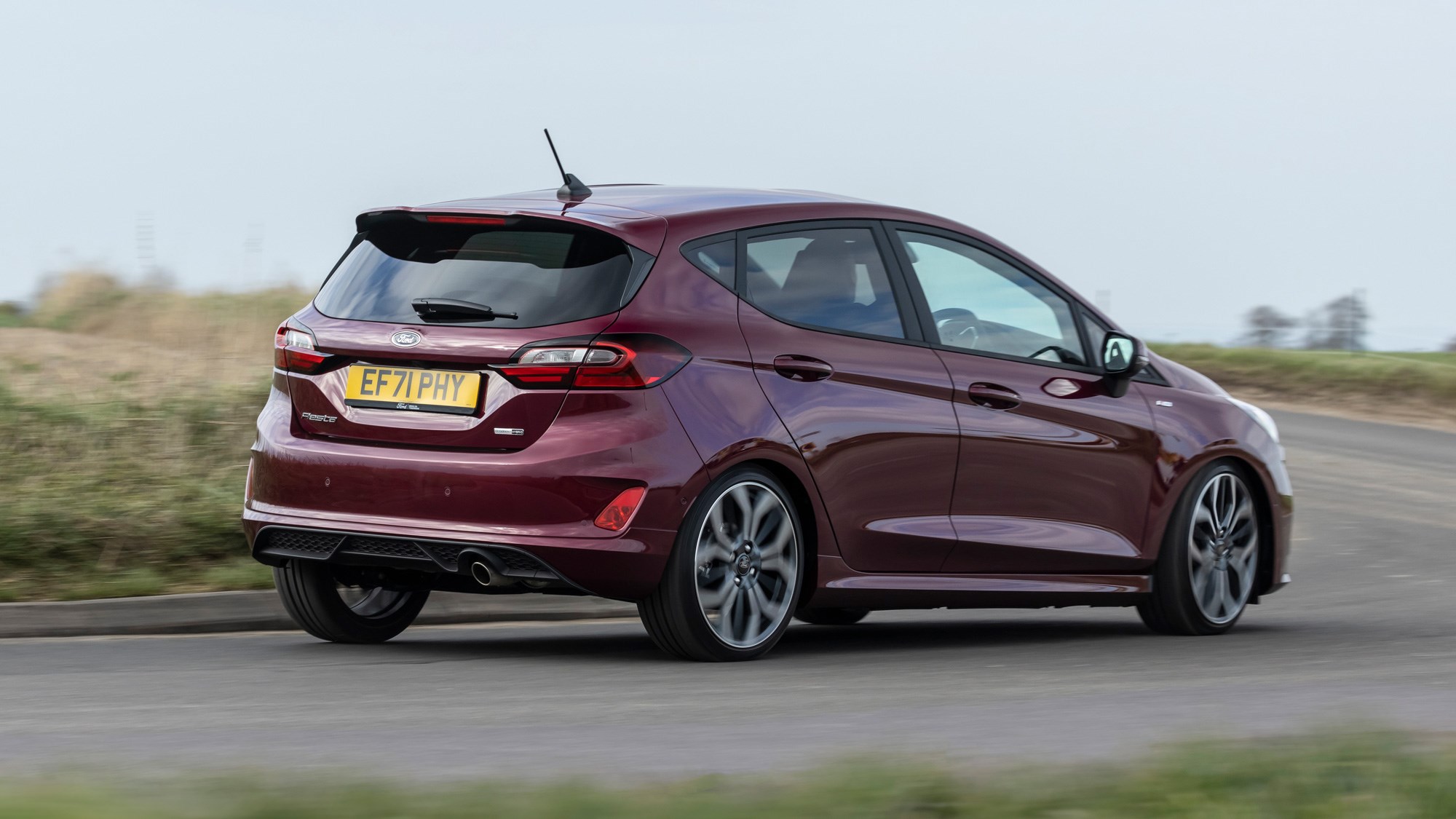► Facelifted Ford Fiesta driven
► Gets fresh styling and updated technology
► But can it still rival the newer Corsa?
The current-generation Ford Fiesta has been on sale since 2017. Last year, the Blue Oval launched an updated version of the car with sharper styling and extra technology in an effort to combat newer supermini rivals like the Peugeot 208, Vauxhall Corsa and Renault Clio. The question is, have the tweaks made the Fiesta any better?
Unfortunately, times have changed and Ford hasn’t. The Fiesta is no longer the best-selling car in the UK – the latest Vauxhall Corsa stole that crown from the company in 2021 and has been topping the charts ever since. Rival manufacturers have also embraced electrification to a greater degree in a bid to appeal to the eco-conscious.
The most amount of electrification you can get with the facelifted Ford Fiesta is a mild-hybrid system, which is starting to look sub-standard in the class. The MINI Hatch, Vauxhall Corsa and Peugeot 208 are all available with pure-electric powertrains, while the Renault Clio and Toyota Yaris feature self-charging hybrid systems. That means the Fiesta’s success now hinges more on how fun it is to drive rather than how cheap it is to run.
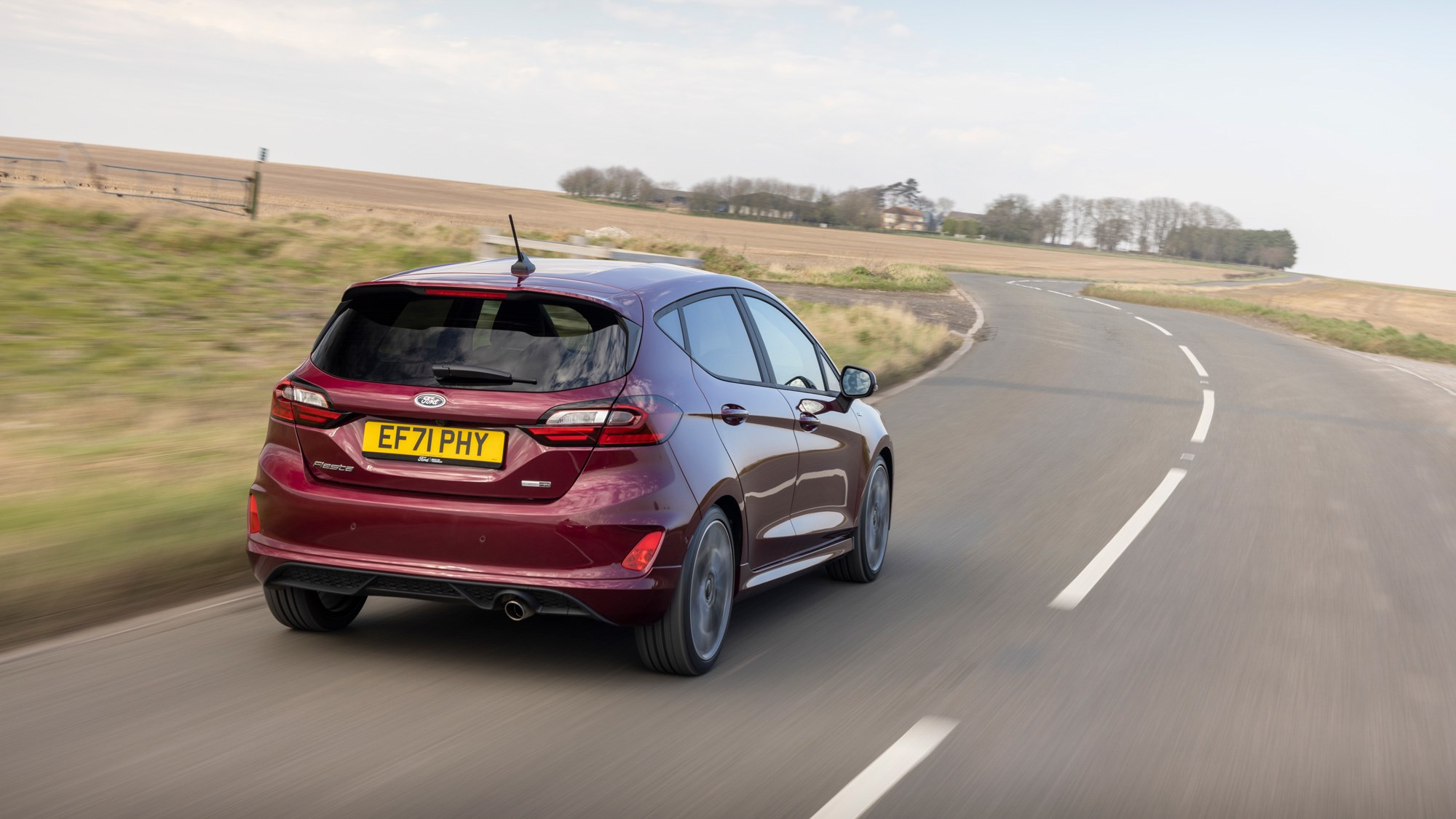
Ford has pared back the Fiesta’s trim levels for the facelift, but you’re still spoilt for choice. The range opens with the back-to-basics Trend model, which gets steel wheels, manual air-conditioning and analogue gauges. But prices start from £18,655, so you can almost forgive the lack of equipment.
Titanium models start from a shade over £20,000. They get extras like alloy wheels, rain-sensing wipers, keyless go and Ford’s new 12.3-inch digital gauge cluster (more on that later). Above that, there’s the jacked-up, SUV-inspired Fiesta Active and the sporty Fiesta ST-Line (like the car pictured in our gallery), which pinches some styling cues from the excellent ST hot hatchback. The Fiesta’s old Vignale trim has also been demoted from a standalone specification to an option pack that adds leather seats, special alloys and different interior trim.
Come on then. Is the Ford Fiesta any good?
Yes. And Ford’s facelift tweaks have made it a more well-rounded car. For starters, you get more equipment as standard. LED headlights and a new ‘Wrong Way Alert’ system are now fitted to every model in the line-up. Buyers can also have a 12.3-inch digital gauge cluster in place of the standard analogue dials by specifying the company’s new Vignale option pack.
It’s still great fun to drive, too. Ford has hacked a lot of complexity out of the Fiesta’s engine range – but the options it left behind are the best ones. Most of the cars leaving the showroom will be powered by turbocharged 1.0-litre three-cylinder mild-hybrid petrol engines with either 99bhp, 123bhp or 153bhp. The most basic Trend model can be specified with a (rather gutless) 74bhp 1.1-litre petrol engine, while the ST variant continues with the same 197bhp 1.5-litre three-pot.

Ford’s 1.0-litre EcoBoost engine is a real cracker. The 123bhp model has more than enough poke and, no matter how you drive it, you’ll get a steady 40mpg everywhere. Just don’t pair it with the seven-speed automatic gearbox. It isn’t that it’s a particularly bad transmission, but the Fiesta’s keen handling and sharp steering suit the six-speed manual gearbox better. It’s a car you want to be engaged by and the automatic gearbox numbs the experience.
The 153bhp version of the same engine is arguably a bit excessive for a supermini that’ll spend most of its life pottering around town, but we’ll admit that it’s a great laugh. It has a little more torque than the 123bhp model, which makes it feel a little more eager when overtaking or tearing down motorway slip roads. If your budget can’t stretch to the ST, a Fiesta ST-Line paired with Ford’s 153bhp petrol engine makes an excellent compromise.
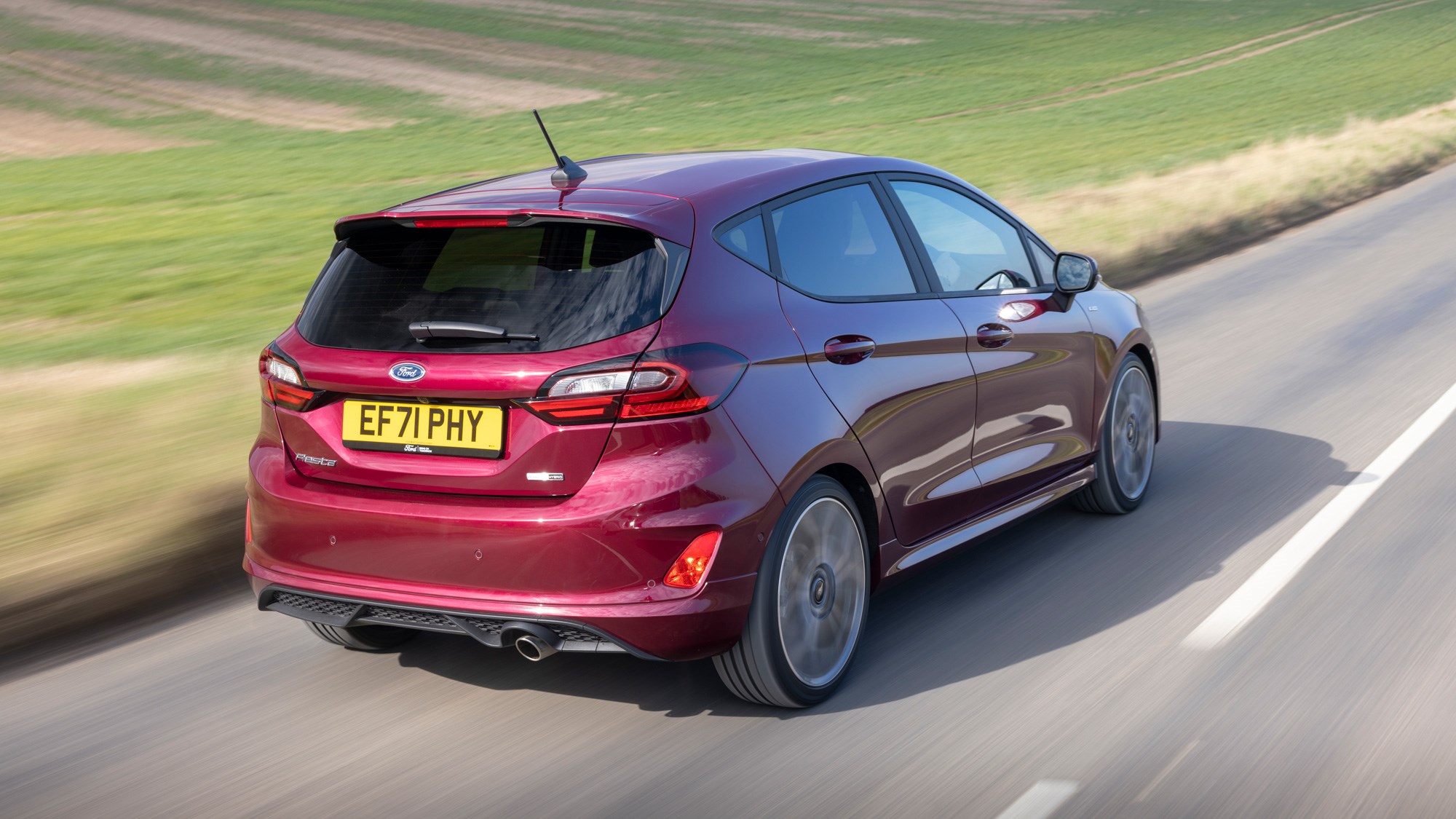
As we touched on above, Ford’s mild-hybrid system seems to have a positive effect on the Fiesta’s fuel economy – even if it is only a small improvement. It also provides a boost of acceleration when you mat the throttle, but the benefit is quite minor.
The biggest difference you’ll notice if you drive one back-to-back with the non-electrically assisted 1.1-litre Trend model is the regenerative braking. When you lift off the throttle, the electric motor drags on the engine, clawing back energy to feed its battery. It feels like a phantom is trailing the cars brakes and can take some time to get used to.
Tell us more about the handling
It’s great. The Fiesta is still one of the best (if not the best) supermini on sale today for keen drivers. You can tack every positive road tester buzzword to the experience. The chassis is agile, there’s loads of grip and the steering is weighty and direct – although it doesn’t provide as much feedback as the previous Fiesta’s now that Ford has moved to an electrically assisted rack.
The ride quality is good, too. The standard car balances body control and comfort admirably well, smothering bumps and tackling bends with equal confidence. The effect isn’t quite as convincing on ST-Line models – those cars feature lower sports suspension and larger alloy wheels which give ruts and bumps a much sharper edge.
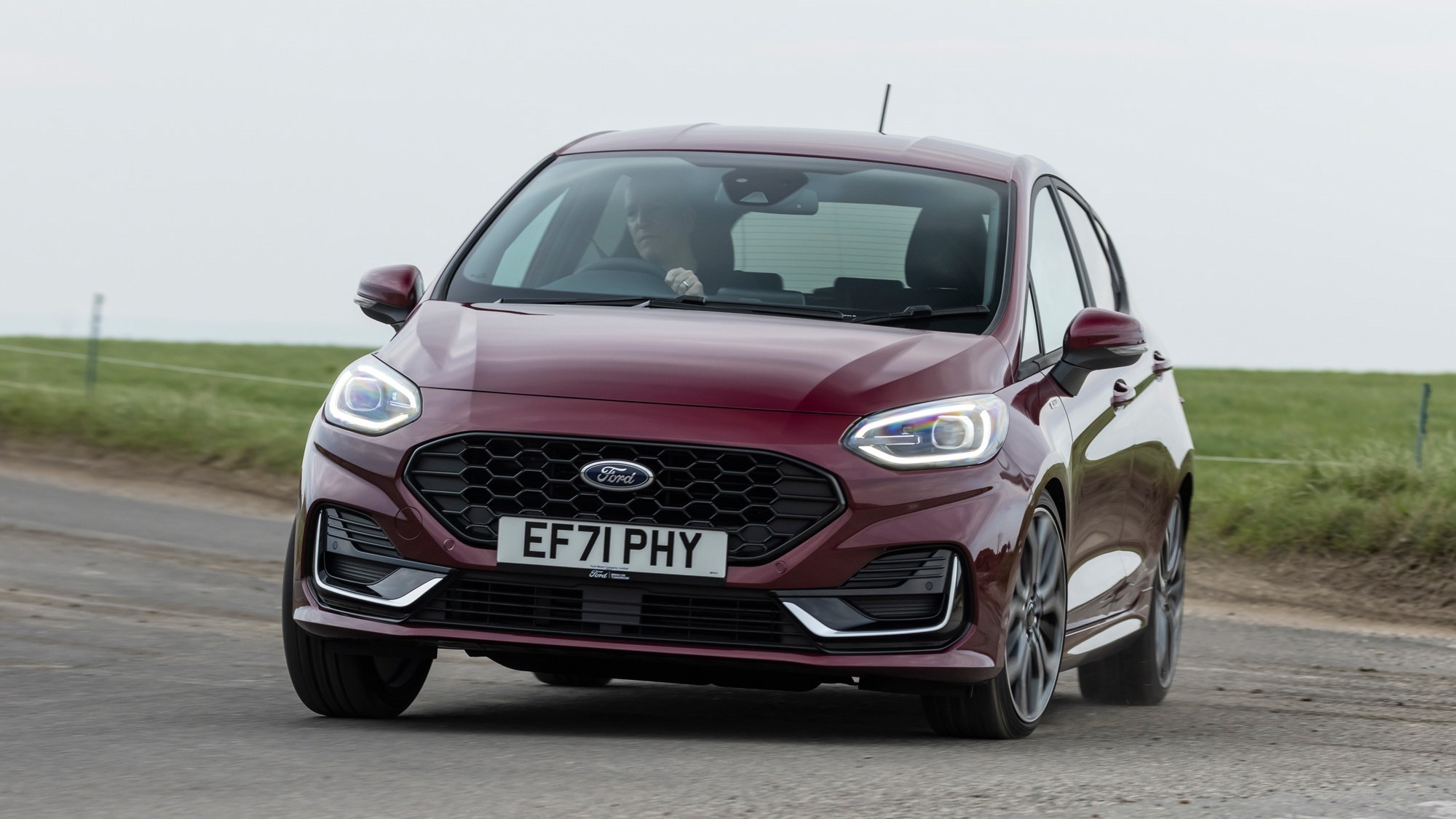
The driving position is mostly good, too. You can set the seat nice and low, and there’s enough adjustment in the steering column for taller drivers to get comfortable. However, I couldn’t entertain the seat base on our ST-Line X test car. It’s tilted too far forward and there isn’t a lot of under thigh support, which made me feel like I would fall out of it when braking for roundabouts.
And the interior? How’s that?
Low maintenance and durable. Apart from the swish new digital gauge cluster, little has changed in the Fiesta’s cabin over the pre-facelifted model – but that’s not necessarily a bad thing. Sure, the material quality isn’t as good as you’ll find in the Peugeot 208 or Hyundai i20 (some of the plastics are quite scratchy, in fact), but isn’t badly built.
The panels have been nailed together properly, the switchgear is solid and the infotainment system feels like it’s been mounted to the dashboard with cement and girders rather than nuts and bolts, which is an important consideration if you plan on using the Fiesta to carry young children.
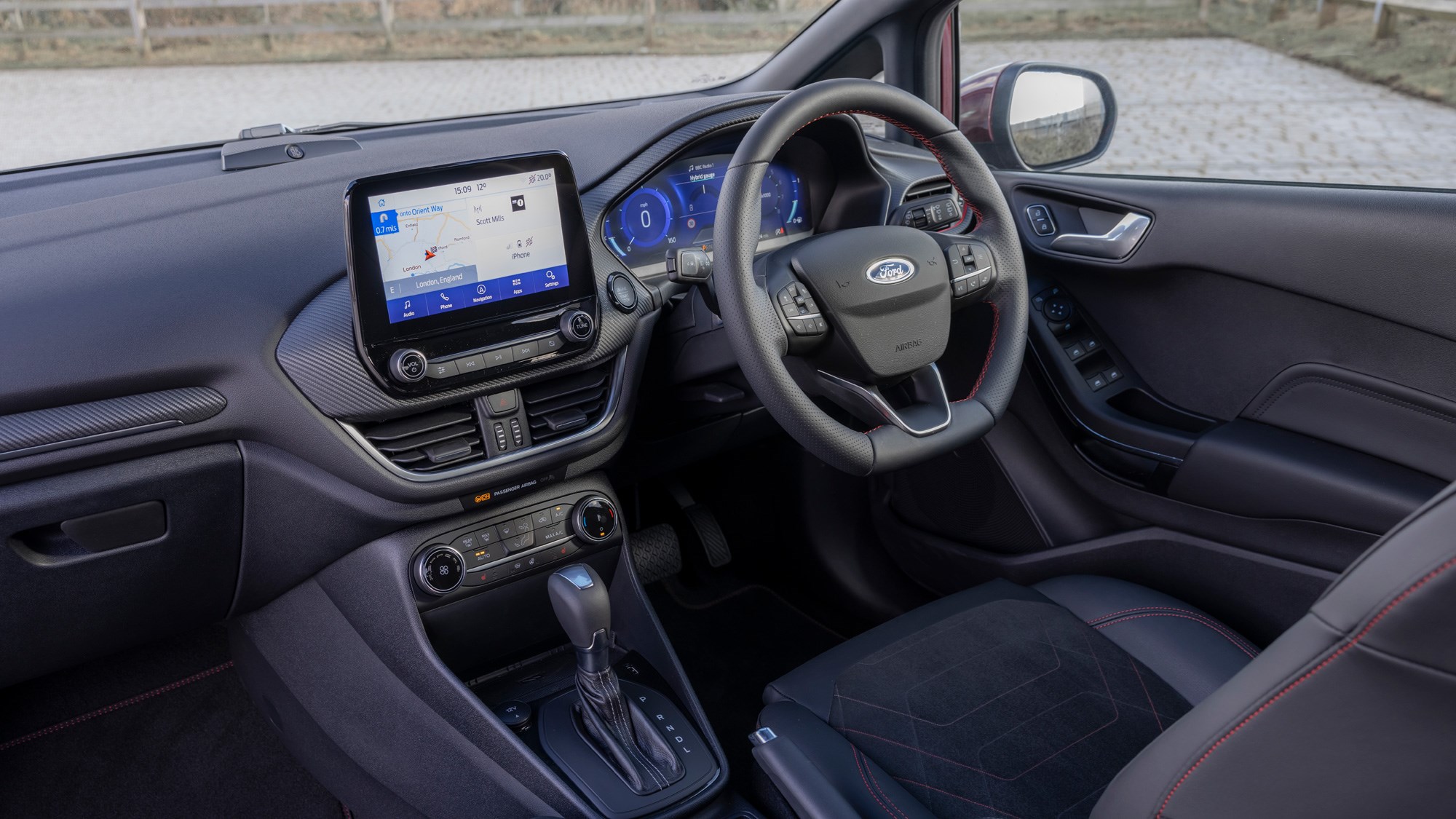
Any parent will tell you that your average a toddler has the destructive power of a tropical storm, and a big shiny screen in the middle of the dashboard is ideal for target practice – but the Fiesta should stand up to the punishment well.
The cheapness of the trims also means that they wipe clean very easily. You don’t need fancy suede cleaners or leather polish here – just a bucket, some warm water and some Fairy liquid will do the job fine, which means its easier to keep the cabin looking fresh.
So, it’s practical as well then?
More so now than it was because Ford has discontinued the three-door model. Now, it’s five-door or nothing – and, although the extra doors aren’t paired with an increase in wheelbase length, they do make it a lot easier to load passengers into the back.
Space in the back is up there with the best in the class, but there’s only so much you can do with supermini dimensions – and if you push the limits hard, cracks will appear. For example, with the seat pushed right back to accommodate a six-foot-three pilot, there’s very little legroom behind. The optional panoramic sunroof also robs headroom, squashing taller adults in the rear.
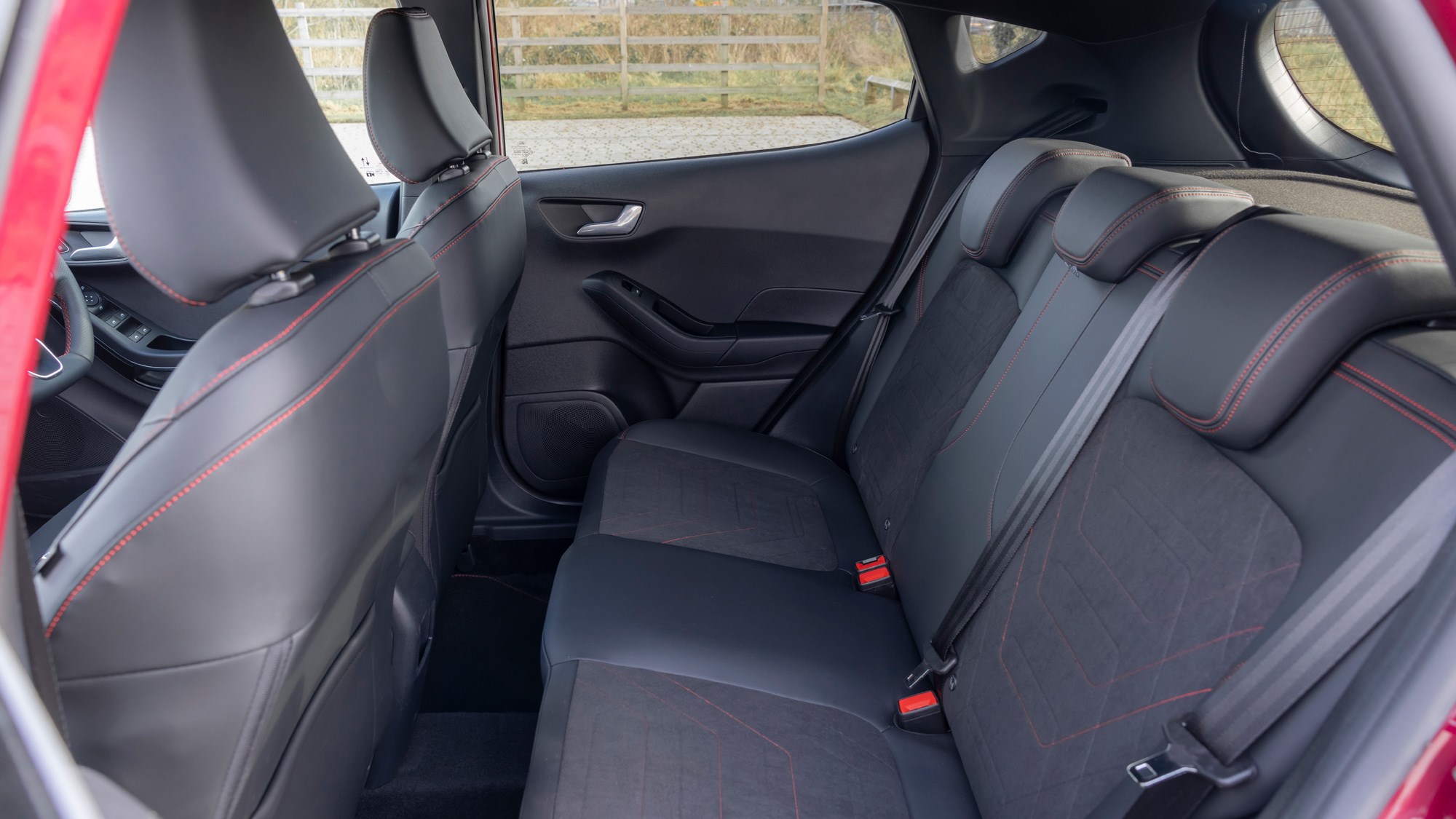
The Fiesta’s boot capacity is fair by supermini standards, but it doesn’t lead the class. You get 303 litres of space, which is six litres less than the Vauxhall Corsa and a whopping 88 litres less than the Renault Clio. The space is a good shape, though – it’s a neat box with minimal intrusion from the rear wheel arch wells, which means its easy to package. There is a quite a steep lip, though. Best hit the gym and start doing some lower back exercises before you buy.
Ford Fiesta: verdict
The Ford Fiesta is a very well-rounded supermini. It’s great fun to drive, rewarding for enthusiasts and just about practical enough for family duties. We’ll be honest – Ford’s facelift updates haven’t pushed the Fiesta on in leaps and bounds, but the styling and technology tweaks have made the car a more attractive package.
The new digital gauge cluster looks good, the now standard LED headlights are a welcome addition and the updated styling keeps it looking fresh alongside its younger competitors. We’d have liked to see Ford spend a few quid more on the cabin trims to kick it into the same league as the Peugeot 208, but you can’t really argue against the practicality of an interior you can muck out with a dishcloth.
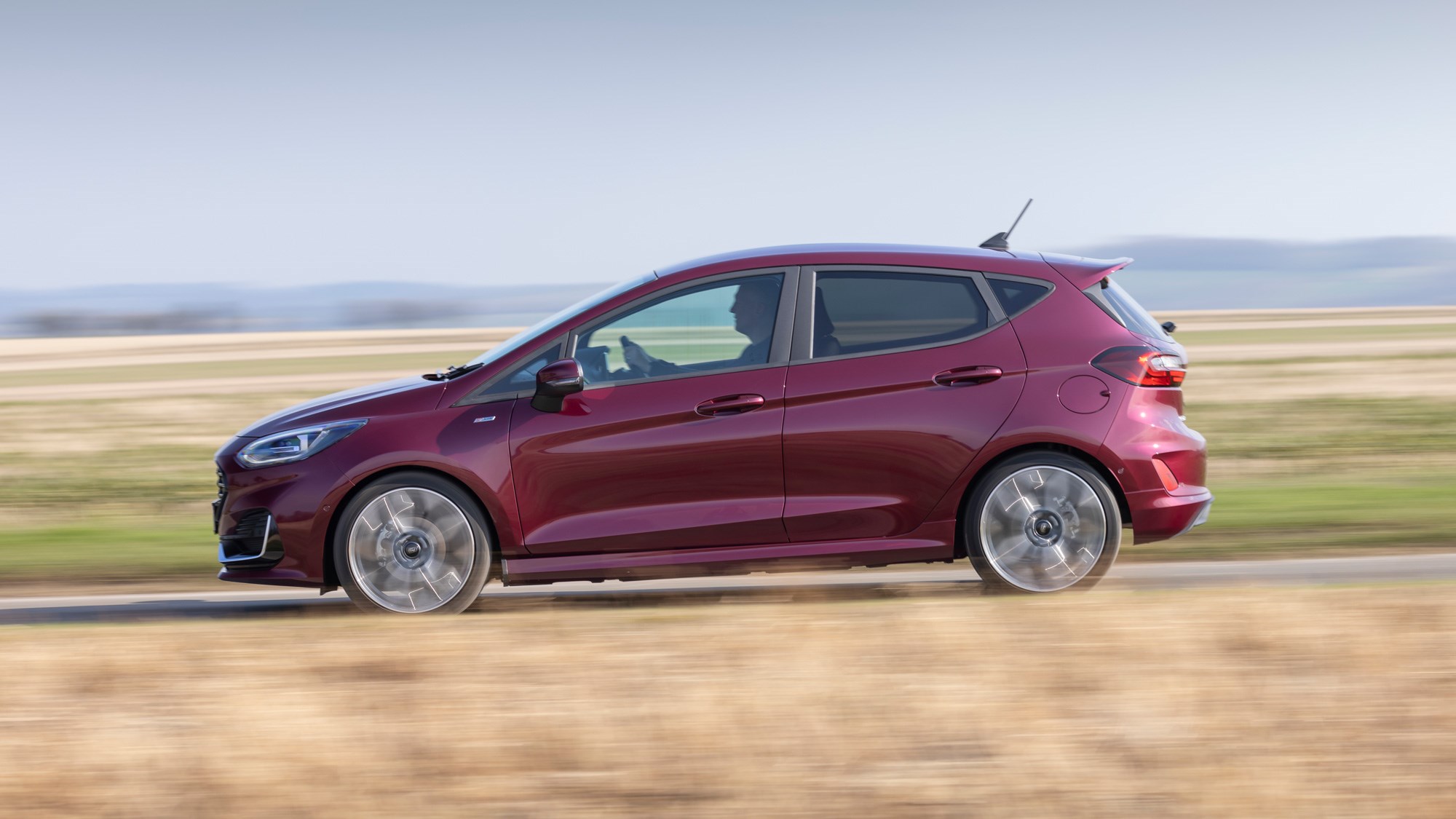
Another criticism is that Ford hasn’t tried to advance the Fiesta’s level of electrification with this facelift, which seems like an oversight in these emissions-conscious times. Like the previous version of the car, the best it can do is a mild-hybrid system which pales in comparison to the Vauxhall Corsa’s pure-electric powertrain or the Renault Clio’s full-hybrid system.
Despite this, Ford’s mild-hybrid EcoBoost petrol engines offer real-world fuel economy figures of around 40mpg, which is mightily impressive. They’re also far more entertaining to drive than any of the eco-minded powertrains from competitors, especially when paired with the firm’s six-speed manual gearbox – and we reckon the fun factor is worth spending a few pounds extra on fuel for.
In 2023, the Ford Fiesta also makes our list of the best used hybrid cars you can buy.
